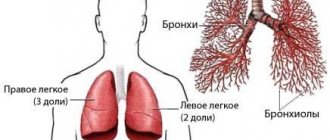Stuttering in children is not only a problem in the functioning of the speech apparatus, but also an echo of certain difficulties in the psychoneurological health of the child. The main period of manifestation of preschool stuttering is the age from 2 to 5 years, when there is an active development of speech abilities and the formation of phrasal speech.
A young child, trying to convey his thoughts to others, is in a hurry, going through words that are of secondary importance in his opinion, may swallow words or endings, gesture instead of verbally indicating actions, using all means of communication. Against this background, confused, unmeasured speech is formed, which makes the child even more nervous.
When treating stuttering, traditional methods help in very rare cases, but you cannot experiment on a child. Only specialists can establish the true causes of deviations in speech development and help cure it using modern techniques and exercises, technical methods and massage. Sometimes breathing exercises, medications, pills and other treatment are necessary.
What is stuttering? Secrets of our brain
According to the theory of speech production, the speech process is a kind of circle of information transfer between three brain centers located in the cerebral cortex - speech (Broca's center), auditory (Wernicke's center) and associative.
With the help of the associative center, we select the necessary words, arrange them in the required sequence, that is, we build a phrase. From the associative center, information is transmitted to the speech center, which processes it, emits the required number of nerve impulses and sends them to the muscles of the speech apparatus (lips, tongue, vocal cords, larynx), as well as the muscles involved in the act of breathing (diaphragm and chest) . A person exhales and speaks, while information in the form of speech enters the auditory center. Auditory control makes it possible to judge the correctness of speech, and if everything is pronounced correctly, information about this is returned to the associative center. This is a signal for the construction of the next phrase.
From this diagram it becomes clear that smooth speech is possible only when all three centers work synchronously, that is, when they transmit information at the same speed. When stuttering, this synchrony is disrupted. The “culprit” for this is Broca’s speech center. For various reasons, its activity is significantly increased, which causes it to produce more nerve impulses and transmit them to the muscles of the speech apparatus. This causes their additional contractions, which, when exhaling, leads to the appearance of convulsive stuttering.
There are two main forms of speech cramps:
- Clonic – convulsions that cause numerous speech repetitions (lo-lo-lo-zhka, ku-ku-ku-kla);
- Tonic – convulsions that hinder speech movements for a long time (t…….axe, m……..machine);
Most often, both forms occur in the speech of a stutterer.
Stuttering in adults
Stuttering is more common in childhood and usually goes away with age. However, there are patients in whom it persists or even appears for the first time in adulthood.
Causes of stuttering
Stuttering is a disturbance in the fluency of speech in the form of a delay in pronunciation or repetition of sounds, syllables, or words. Essentially, these are involuntary excessive movements of the muscles involved in the pronunciation of sounds (facial muscles, respiratory and chewing muscles).
It is known that risk factors include male gender and heredity. However, stuttering itself develops as a result of many factors.
Stuttering most often develops in childhood (from 2 to 6 years) and gradually goes away with age - thanks to the “maturation” of the brain and treatment (for example, classes with a speech therapist).
Unfortunately, if stuttering is not treated, it can persist for life, and then it will be difficult for the patient to communicate and live normally. Often a person who stutters tries to speak less and withdraws. In addition, self-doubt, anxiety and even depression may increase over time.
The mechanism of development and types of stuttering
In adults, as in children, there are two main mechanisms for the development of this pathology. Stuttering that developed due to a stressful event
, called
logoneurosis
. It is usually combined with anxiety, sleep disturbances and other manifestations of neurosis.
Diagnosis of stuttering
If there is a suspicion that the child stutters, then it is necessary to contact a pediatrician, neurologist, speech therapist, or psychologist. When diagnosing the disease, an important role is played by the child’s medical history, information about how his development went and is going, as well as information about the circumstances under which he begins to stutter. To determine the stage of the disease, a speech diagnosis will be required, which includes assessments of speech rate, voice and breathing. During the study, the doctor will identify speech and motor disorders, if any, and determine what type of logoneurosis the little patient suffers from.
To detect pathologies of the central nervous system, you may need to:
- rheoencephalography (study of cerebral vessels);
- Brain electroencephalography (EEG);
- Magnetic resonance imaging (MRI).
Neurotic and neurosis-like forms of stuttering
A neurosis-like form of stuttering often appears against the background of a pronounced mental disorder with motor impairment and loss of control over articulation. This form is recorded on an Electroencephalogram device, most often showing pathological functioning of the brain; children with this form often lag behind their peers in development. Neurosis-like stuttering has little in common with ordinary stuttering and is only a small part, the tip of a much more serious disease associated with mental disorders. Unlike the neurotic form, the neurosis-like form of stuttering is detected by objective diagnostic means; simply put, it is visible when an MRI is done.
Read my book, in which I tell my experience of getting rid of stuttering, enter your email below and receive it, it's completely free!
Book: Getting Rid of Stuttering
After confirmation you will receive the book to your email.
Your email:
The neurotic form of stuttering is stuttering that is common to us, which is not detected by medical examination. An electroencephalogram shows a completely harmonious state of the brain (if there are no deviations associated with another disease), in contrast to the neurosis-like form; if a stutterer silently undergoes an examination, then doctors will not be able to detect that the person has a stutter. Neurotic stuttering in children occurs in most cases at the age of 3-4 years, begins suddenly and progresses quickly.
The type of stuttering depends on the situation: often when alone with oneself, stuttering weakens significantly, and during internal dialogue with oneself, stuttering is completely absent. But in a stressful situation, especially in a situation related to public speaking, addressing unfamiliar people, making a phone call, stuttering intensifies significantly, and every word is given with great effort due to severe spasms of the speech apparatus.
For parents of children who stutter
Typically, a speech therapist working with a preschool child with speech therapy problems provides full instruction to the child’s family members.
There are special exercises, tools and general rules that must be followed at home if you want to help your baby as quickly as possible. The outcome of treatment and speech correction in preschool age depends on the fulfillment of these conditions.
You will help your child if:
- give up for a while complex developmental activities, intensive preschool education, attending various additional clubs and sections, swimming pool, dancing;
- exclude visits from guests, holding stormy holidays that cause emotional stress in the baby;
- you will be able to closely monitor compliance with the regime and perform exercises prescribed by the speech therapist and massage if breathing exercises and other treatment are carried out in a timely manner;
- allow your child to express all his emotions without regard to others, and do not shame him for crying and dissatisfaction.
Watching TV shows and using the Internet can overstrain a preschooler’s psyche. It’s worth choosing calm, already familiar cartoons, and reading his favorite age-appropriate books.
In verbal communication between you and your baby, you need to establish rules that will help him relax. Parents need to help their child cope with overwhelming emotions, choose the right words and expressions, and use all the tools of speech.
You should learn to discuss with your child those events that involuntarily cause anxiety, various stressful situations, without condemning the behavior, without giving ratings. If the child himself finds it difficult to describe something, do it for him, supplement his story with clear, competent comments, as if he said it himself.
When communicating with a child or in his presence, you need to avoid complex speech structures , discussion of topics unfamiliar to him or exciting subjects. You cannot put pressure on your child, forcing him to speak faster or slower, forbidding him to express a negative attitude towards someone or something, towards current events.
A child is always a person, even when he barely begins to speak. He has incredible sensitivity and absorbs many of the emotions of adults. Therefore, by the time phrasal speech is formed, he already has many of his own ideas about life.
Efforts should be made to normalize the emotional climate in the family and in the children's group where the child is. For a preschooler, good contact with parents and household members allows him to quickly solve the problem of stuttering and overcome the difficulties that have arisen.
Correction of a speech problem can begin with the selection of a specialist who can find a good approach to the child, without relying on traditional methods of treatment. Although in some cases, to normalize emotional calm, the medicine can be a sedative herb and relaxing exercises, gymnastics, and sometimes pills.
Massage and breathing exercises offered by a speech therapist play a special role in the treatment of preschool children. These funds are aimed at developing the respiratory muscles and overcoming convulsive syndromes that interfere with voice work. Exercise and massage help strengthen muscles and relieve spasms.
It is a well-known fact that people who stutter can sing without hesitation. Song lyrics often have a downbeat or stress at the beginning of a phrase or lack difficult-to-pronounce letter combinations. In addition, accompanying factors have an influence - choral accompaniment, accompaniment and rhythm.
The essence of this phenomenon is that when singing, people overcome spastic muscle contractions that interfere with normal communication, which cannot be eliminated by conventional treatment. Most often this applies to children who have mild motor manifestations of logoneurosis.
Emotional stability in the behavior of a preschooler, precision and clarity in the tasks of a speech therapist, and an established life contribute to the rapid elimination of logoneurosis at home. For a speedy recovery and systematic training, there are speech therapy kindergarten groups and specialized kindergartens where children with speech development problems are taught and treated.
Author: Shestakova Lyubava Vladimirovna, teacher of a preschool institution
Recommendations for parents
- Follow a daily routine. Children aged 3 to 7 years are recommended to sleep 10-11 hours at night and 2 hours during the day, from 7 years old - 8-9 hours at night and 1.5 hours during the day. Watching TV before bed is not recommended.
- Create a favorable psychological environment. You should not constantly make comments and pull the baby back - this harms his psyche. It is also necessary to exclude quarrels between adults in the presence of a child. Don't show him that you are worried about speaking incorrectly. Don't rush him when answering your questions and praise him more often.
- Help your child with daily communication. He should hear only correct speech from others. You need to speak clearly and at the same time affectionately, because children immediately imitate the manner of adults. If a child has a severe stutter, it is necessary to communicate with him in a sing-song voice. You should not force him to pronounce words that are difficult for him several times.
- Strengthen your overall health. Parents should use all possible means to ease the child’s nervous tension, eliminate overwork and unnerving noisy “parties.” In addition, it is recommended to harden the child’s body through outdoor games, air baths, rubdowns, etc.
If logoneurosis is detected, there is no reason to panic. On the contrary, the nervous state of adults can be transmitted to the baby and aggravate the situation. You should consult a doctor as soon as possible, and then carefully follow all their instructions. In addition, you need to create a calm environment at home that will promote healing. Remember that the child must believe that he will be cured of stuttering, and the support and trust of loved ones will help in this.
Views:
5752.
Causes
Remember when they used to say that stuttering can be cured by severe fright? That is, for some reason it was believed that this problem arises exclusively from nervous shock and is treated by it. Well, they knock out a wedge with a wedge, to make it clear. Is it so? To date, it has been proven that no.
There can be many reasons. In order not to overload you with information, I classified them into three groups:
- Physiological. That is, it was predetermined even when the mother was carrying the baby in her tummy. This includes all sorts of problems during pregnancy, postpartum injuries, and heredity.
- Features of the baby's nervous system. Unfortunately, children who are too impressionable, afraid of everything, and whiny are included in this risk group. If the emotional background of the baby is so vulnerable, any stress can become a spark. The child is attached to his mother, but at the age of 3 you send him to kindergarten? Complications may occur. Here you need to act extremely carefully.
- Social. Even healthy, psychologically stable children can begin to stutter. The reason is the behavior of loved ones. And not only quarrels and scandals between parents. This could be overprotectiveness. By the way, imitation of a stuttering relative also leads to illness. Yes Yes! The baby may just start imitating. And if this is not stopped, he will get used to it and reinforce this habit...
The cause influences the classification of stuttering.
Treatment and correction in children and adults
Is it possible and how to cure stuttering caused by fear? Logoneurosis can be corrected. Before proceeding with treatment, it is necessary to study and eliminate the cause that led to the pathology.
Treatment is carried out through medication and psychotherapy . The time and intensity of the course depends on the complexity of the disease; for the procedures to be effective, all medical instructions must be strictly adhered to.
List of medical procedures to improve the patient's condition:
- relaxing massage – removing the tone of the speech apparatus and improving blood circulation in the body;
- breathing exercises – establishing high-quality breathing;
- wall psychotherapy – psychological overcoming of the speech barrier between the patient and society;
- medications – treatment of serious mental disorders;
- electrosonotherapy – improving blood circulation, reducing pain sensitivity;
- psychological trainings, art therapy and psychoanalysis sessions - socialization of the patient, identification and self-healing of the disease;
- hypnosis – relaxation of the body and finding out the causes of psychotrauma in the patient.
Neurotic (colloquially “nervous”) stuttering in children and adults most often occurs as a result of stress. Adverse psychological factors influence the destruction of a person’s speech. The symptoms of the disease can be either pronounced or indirect with alternating relapses.
Individuals with weak psychological stability are more susceptible to logoneurosis. Most often, the disease is characteristic of early childhood, for example, a child suddenly became frightened and, after experiencing fright, suddenly began to stutter.
Depending on the severity of the disease and treatment conditions, the pathology has favorable and unfavorable outcomes . In the case of a progressive (favorable) situation, the symptoms may disappear completely.
Causes of stuttering
In its origin, stuttering can be neurotic in nature - with disorders of the brain, the causes of which are physiological in nature - intoxication or birth complications. The disease also occurs when speech centers are overexcited, as a consequence of organic damage to the nervous system.
When stuttering occurs against a background of neurosis, called logoneurosis , several types of this disease can be distinguished. The occurrence of logoneuroses is also caused by the spontaneous appearance of certain factors, for example, problems at home, which greatly influence the emotional state of a preschool child.
With speech neuroses, it is believed that the main cause is psychological instability and the predisposition of a young child to the occurrence of disruptions in speech activity.
The reason may be the presence of an adult who stutters in the family. It is difficult to cure neurosis in such cases. Calming herbs and regular gymnastics, other restorative procedures and treatments, which are often recommended by many mothers, are not universal remedies. Treatment can be phased, when first specialists deal more with the psyche, and then with speech therapy problems.
The reasons for the manifestation of logoneuroses are events that traumatize the child’s psyche, stress, suppression of personal manifestations in the child’s behavior, pressure exerted by adults or some factor on his psyche. It is not always possible to trace what exactly caused the onset of the development of logoneurosis.
Sometimes the provoking factor is a whole chain of events in which the child experiences emotional fatigue and discomfort for a long time.
If the stage of development of active phrasal speech coincides in time with emotional stress, illness and stress, this can significantly harm the development of communication skills. It will cause a complete reluctance to talk, isolation in a group or in familiar home conditions, and will also cause developing stuttering.
Causes of the disease
The main reason for the appearance of neurotic hesitations is the influence of a traumatic situation or prolonged distress.
In the case of a one-time destructive psycho-emotional event, the disease may go away after some time; more serious consequences (up to transient mutism) are expressed due to prolonged stay in an environment unfavorable for the psyche.
Is it possible to start stuttering from fear? Examples of psychogenic causes of stuttering in children and adults:
- stress, extreme fear, or extreme anger;
- excessive load when teaching spoken language;
- violation of family roles and family functionality in children;
- imitating the conversation of a stuttering relative or friend;
- loss of a loved one;
- love problems.
Pathogenesis and development mechanisms
The origin and formation of logoneurosis in modern medicine has not yet been sufficiently studied.
Presumably, when exposed to acute stressful situations, neurotic hesitations develop through the appearance of a stable pathology of conditioned reflex functions. And the final consolidation of the disease is the formation of motor automatism.
It can be assumed that at the age of 2 to 4 years, stuttering is influenced by the pathological consolidation of natural speech hesitations , characteristic of this age period of the formation of speech functions (the so-called functional stuttering).
Statistics show that stuttering often begins to appear in the early stages among children aged 3-5 years. Complications of symptoms and accompanying neurotic reactions can be observed mainly among adolescents, in the period 15-17 years.
The complication process is associated with rapid age-related changes in the human body. Logophobia (fear of speech) is formed precisely during puberty , subdepressive mood changes also appear, and various kinds of asthenic and somato-vegetative disorders arise.
You can learn about the causes of clonic and tonic stuttering from this article.
By localization
Convulsions that lead to hesitations in speech are localized in different areas:
- Articulatory. The spasm can affect the muscles of the face (contraction of the muscles of the upper or lower lip occurs, resulting in the pulling of the corners of the mouth to the sides or its convulsive opening, in some cases the muscles of the neck, forehead and ears also take part), the muscles of the tongue (its involuntary falling out of the cavity mouth, involuntary opening of the mouth, etc.), muscles of the soft palate (in this case, the passage from the pharynx to the nasal cavity either closes or opens).
- Respiratory. They are observed when inhaling, but they are hardly noticeable and appear as minor pauses in conversation. Occur with varying frequency and intensity. When exhaling, the patient has difficulty finishing a word or phrase. In this case, a strong contraction of the abdominal muscles occurs. The spasm affects the facial muscles, causing the face to become distorted. There is a feeling of lack of air.
- Voice. The vocal folds constantly close and open, causing the patient's speech to become intermittent and vibrating. During a conversation, the vocal folds can close completely, which leads to a sharp pause and loss of voice, while the person lacks air. A spasm occurs when pronouncing vowel sounds, and the patient lengthens them to such an extent that shortness of breath often occurs. The neck muscles tense and the voice becomes unnatural. Articulation may not be evident.
- Mixed. Convulsions during stuttering can alternate with each other and can overlap one another.
Living with a stutter
Many people who stutter are afraid that their speech defect will cause laughter and misunderstanding among others. Some fear that people will think that they have low intelligence, are drunk or have a mental illness. These stereotypes, caused by difficulties in communicating with other people, force us to find new ways to talk “normally”. Some people who stutter adapt to their defect so well that it is completely invisible to outsiders.
People with logoneurosis often anticipate conversational situations and try to plan for them. They can replace words that you cannot pronounce. Or they reduce their speech to a minimum. For example, some people are deliberately late for a meeting so as not to introduce themselves or say their name.











